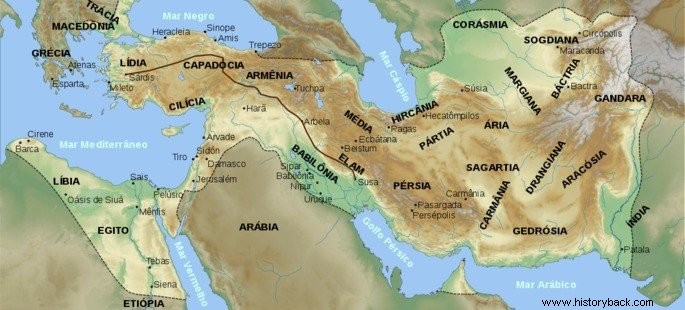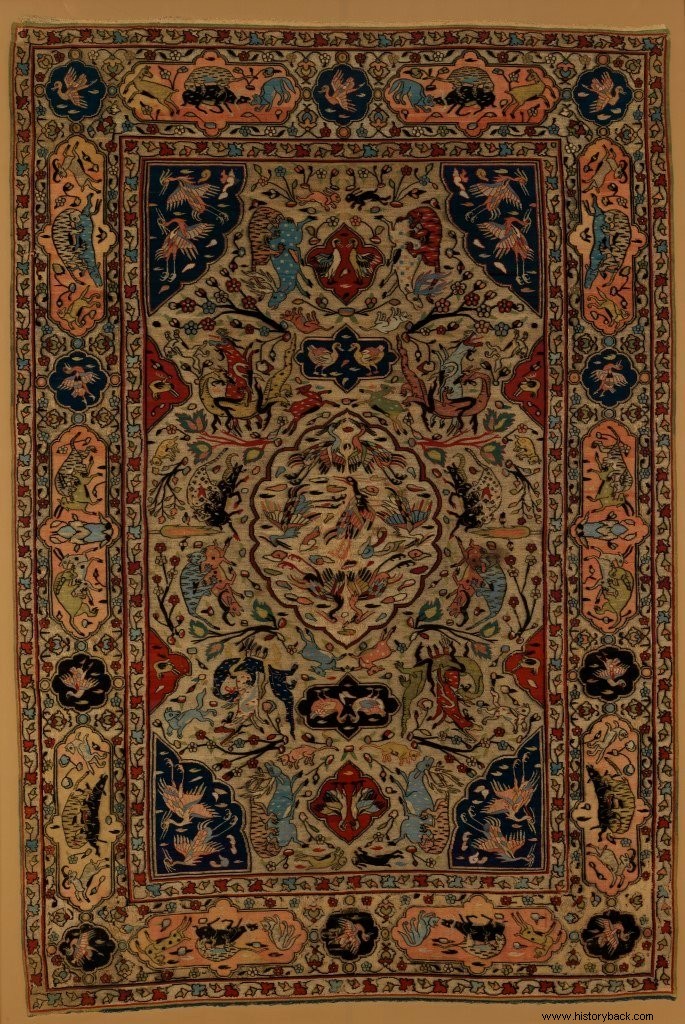The Persians constituted one of the most important civilizations of antiquity.
Persia was located mainly in eastern Mesopotamia, in the current territory occupied by Iran, which was called Persia until 1935, when it changed its name.
The Persian Empire
The Persians spread over a large territory. Among his conquests we highlight:Babylon, Egypt, the Kingdoms of Lydia, Phoenicia, Syria, Palestine and the Greek regions of Asia Minor.

The beginning of the Persian Empire was Cyrus the Great (560 BC – 529 BC). However, the development of civilization is mainly due to Darius I the Great.
This was responsible for large constructions, mainly the Estrada Real, whose objective was to maintain the hegemony of the conquered peoples. It was followed by Darius I, Xerxes I, Artaxexes I until the last emperor, Darius III, defeated by Alexander the Great.
Persian politics and sovereign power
The expansion of Persia was only possible thanks to the entrepreneurship of the emperors who were in their power.
All peoples conquered by the Persian Empire had to pay taxes, but they were not obliged to set aside their customs or their language.
The Persians were one of the first peoples to carry out political and administrative reform. It was necessary to organize the population that had been conquered. Thus, the administrative reform carried out under Darius gave rise to the satrapies - provinces ruled by the satraps. These were considered the "eyes and ears of the king", trusted people charged with watching over the satraps.
Thus, the political and administrative system of the Persian civilization had a higher level of complexity in relation to other societies of the period.
Persian Economy
The Persians lived off agriculture, mining, handicrafts and taxes levied on subjugated peoples.
The construction of the Estrada Real provided the development of commerce, as it made travel faster and safer. In order to be able to trade with all regions of their vast empire, the Persians instituted a currency, the daric.
Persian Culture, Art and Religion
The Persians built great architectural works and their palaces, in addition to being large, were quite luxurious. Mosaics and paintings depict the deeds of emperors as well as the gods.
Even today, Persian culture is famous for the beautiful Persian rugs recognized all over the world. His elaborate designs form a geographic labyrinth or with elements of nature.

Zoroastrianism or Masdeism is the name of the ancient religion of this people, which originated from the fusion of popular beliefs of the Persian peoples, made by its founder, the prophet Zoroaster or Zarathustra - hence the origin of the name.
It is a dualistic religion, that is, it believes in the principle of Good versus Evil (Mazda , the god of Good, and Ariman , the god of Evil).
We have more texts on this subject:
- Phoenicians
- Hebrews
- Alexander the Great
